I think everyone loves Sundays. I enjoy the relaxation that comes with the weekend but Sunday seems extra special.
It is a bonus and a treat as a mother when my teenagers decide to make lunch or brunch and it is not my birthday or Mother’s Day. Haha
It is sometimes music to my ears when I hear the words,
“I will cook today”.
I fell in love with the tasty Vietnamese wraps/spring rollls when I visited Vietnam many years ago. I have taken lessons and often tried new recipes or try to emulate the flavours and tastes I enjoyed. Often I Iearn the basics then try my own versions. I passed on my love for Asian foods to my children.
I like when we can personalise or tailor a dish to our own palate because food is for our own enjoyment and sustenance. This is exactly what happened when I expressed a craving for vietnamese wraps/spring rolls and my sweet 16 year daughter decided to surprise me. We had homemade Vietnamese styled wraps or gỏi cuốn for lunch.
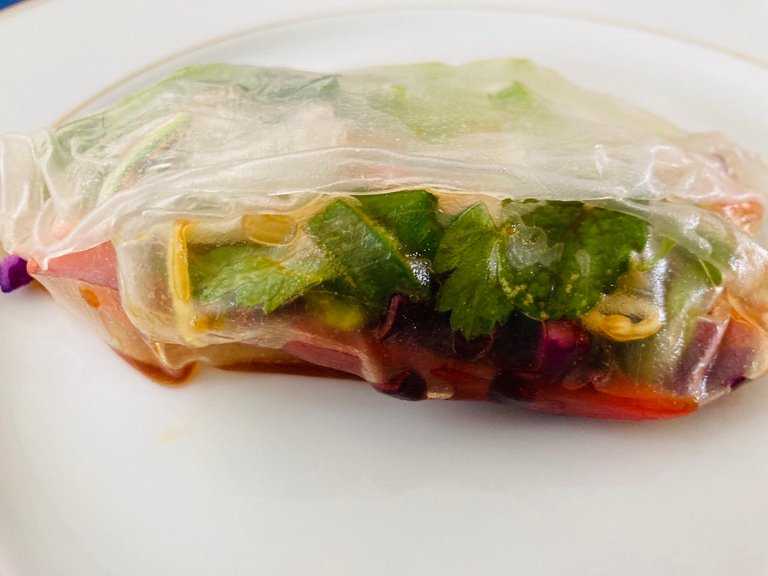
non-fancy homemade vietnamese wrap
Unlike Chinese spring rolls which are fried - Vietnam spring rolls are served at room temperature. The wrap is made of rice paper.
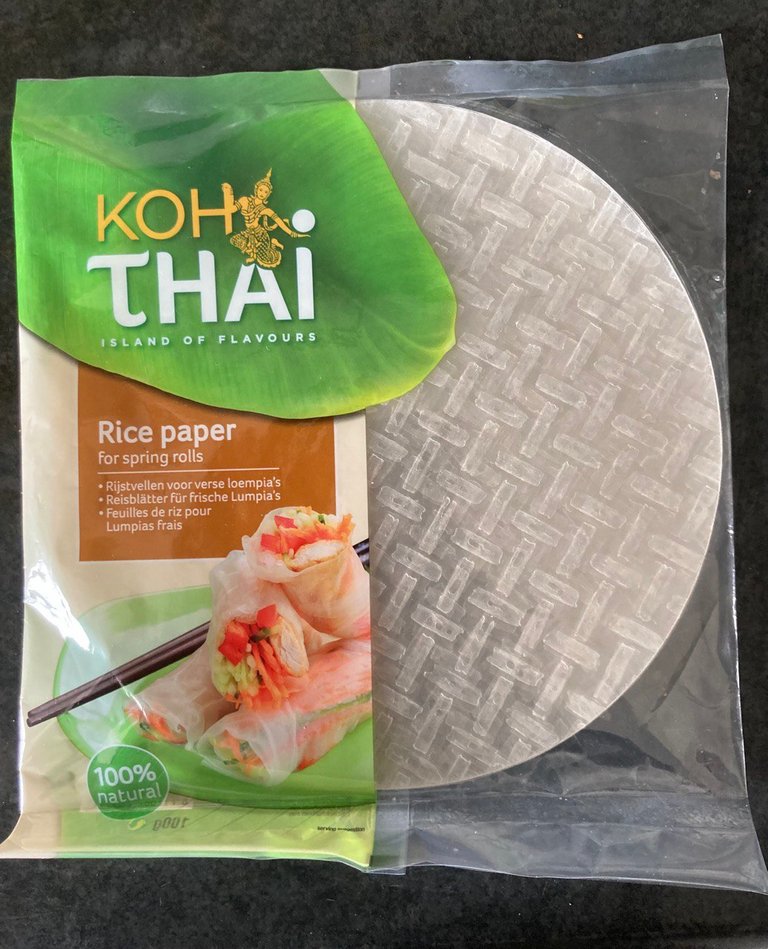
They are usually filled with prawns/shrimps or pork, vegetables, herbs, rice vermicelli and serve with a dipping sauce.
The ingredients
As this is our take on these lovely spring rolls, the table was set with the following:
- lettuce
- thinly sliced carrots, cucumber and bell peppers
- chopped up scallion, parsley, coriander (cilantro)
- red cabbage
- bean sprouts
- rice paper
- soy chicken (this is our addition)
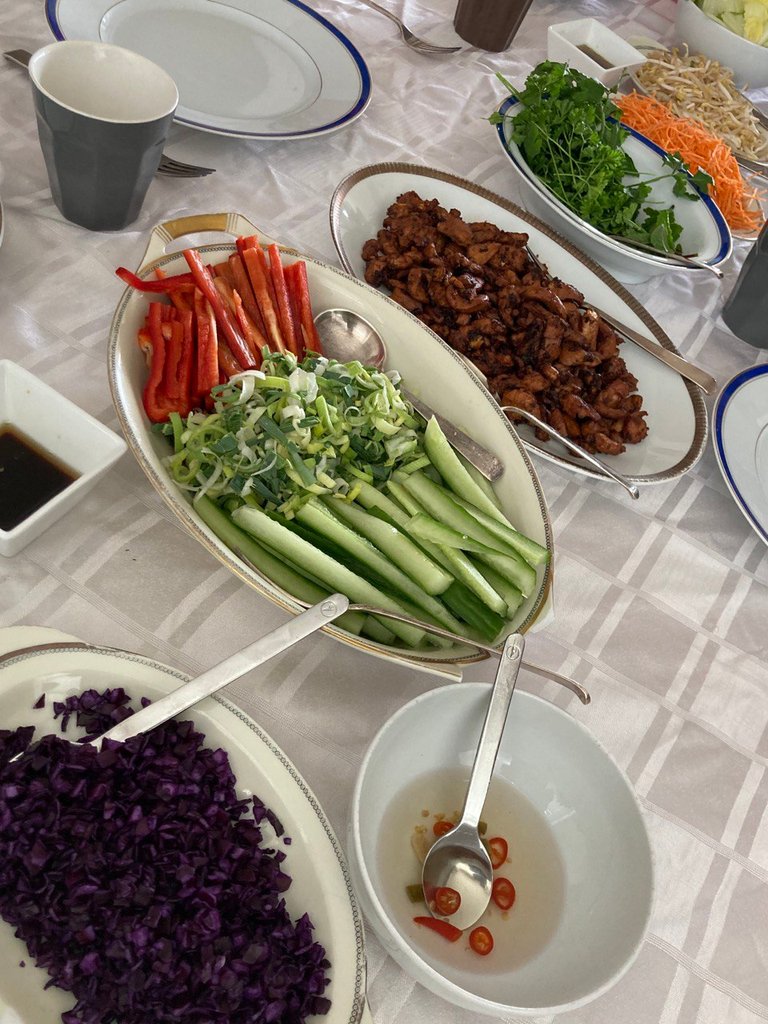
There were also 2 dipping sauces which are similar to the traditional sauces.
- The first is a Peanut sauce made from peanut butter, sugar, fish sauce, sesame oil and a splash of soy sauce and a bit of water to loosen up the mixture..
- The second sauce is called nước chấm, a Vietnamese dipping sauce made of fish sauce, lime juice, chilli, sugar and garlic.
The sauces are very important for the taste of the spring rolls.
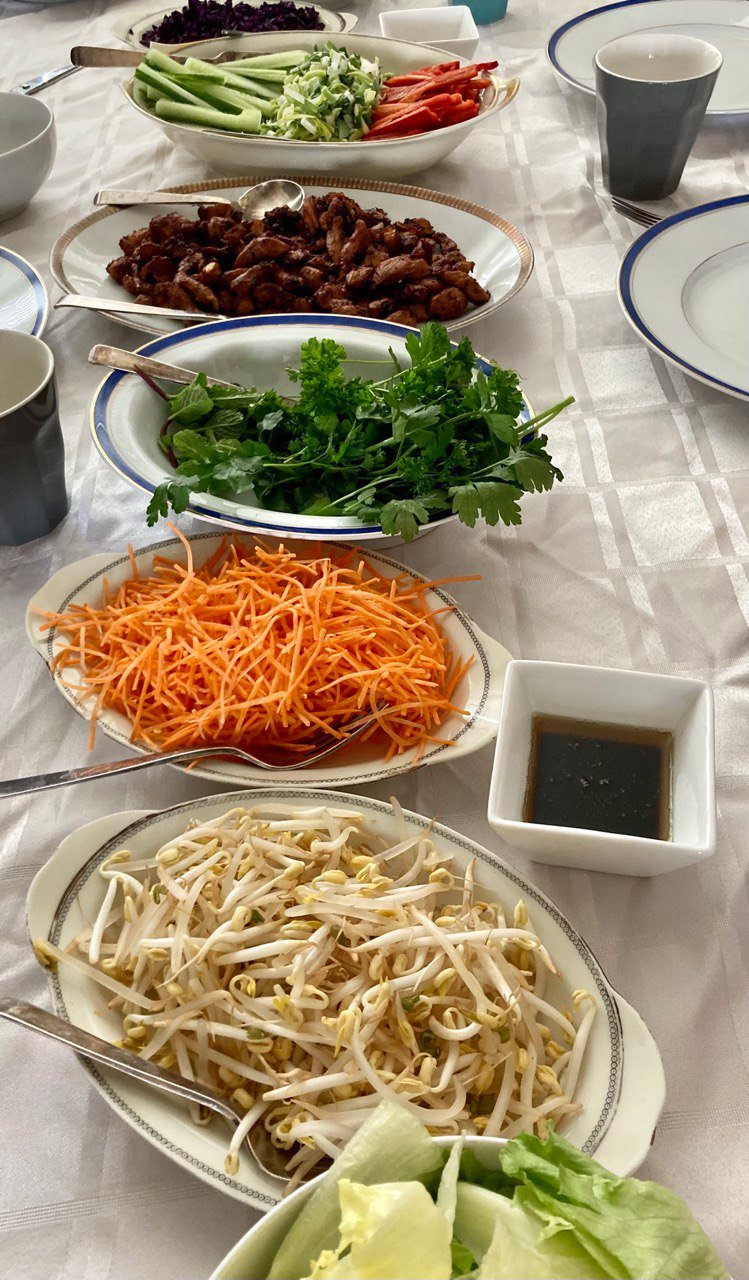
How the vietnamese spring rolls/wraps are made
- The rolls are made by dipping the rice paper in a plate or bowl with a shallow layer of warm water.
- After a few seconds, the rice paper is softened and it is then placed on the plate. The toppings (ingredients mentioned above) are then added and then the softeneed rice paper.
- Thereafter the spring roll can be rolled.
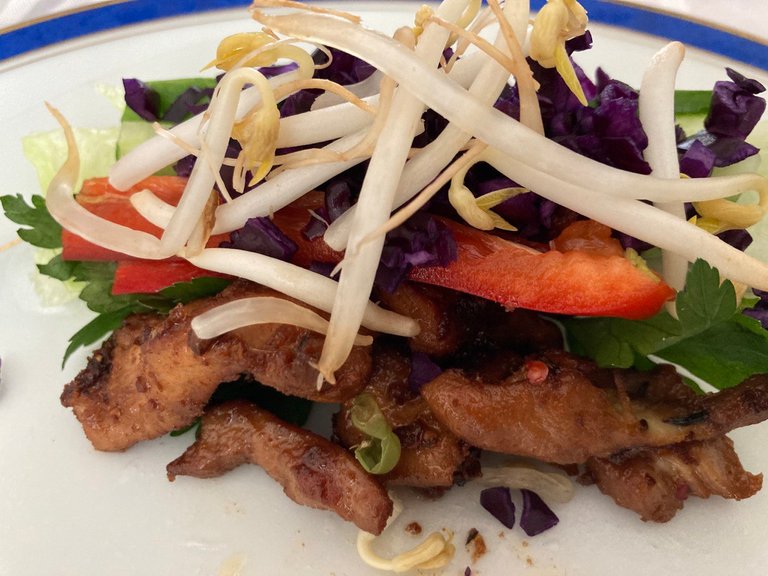
the selected toppings on a softened rice paper
As these are homemade and for immediate consumption - it is "do-it-yourself" and roll it the best way you can. There is no expertise required or need to make them pretty. The important thing is that the ingredients fit into the softened rice paper.
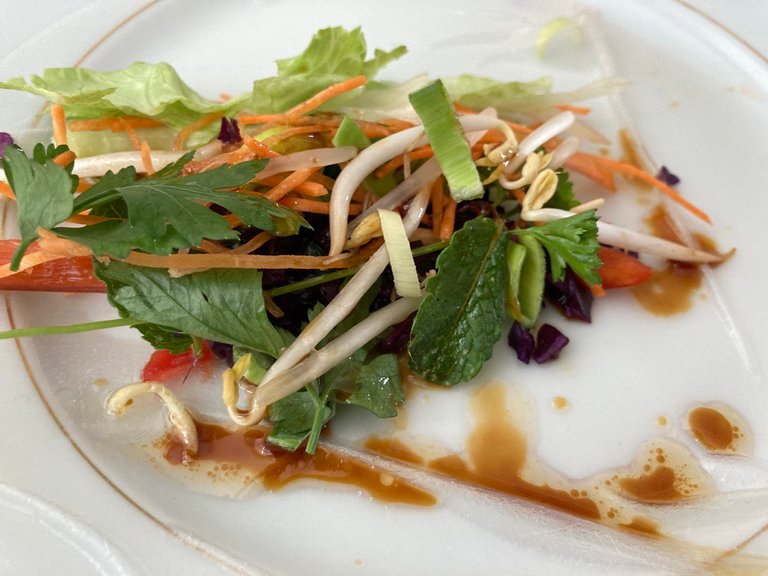
a vegan version - with added sauce
I love this type of eating because it is active dining. We are all partaking in putting together our own meals. It is fun, tasty and healthy. Sometimes we need to help each other if the rice paper becomes too floppy or not soft enough.
From the first photo you will see that my wrap is not perfect. It takes practice. Every time we eat these vietnamese spring rolls - we get better at making them. My youngest always seem to make it just right.
To be honest once everything's on the table - there's not much time for photos - everyone wants to start eating. I hope you enjoyed this treat.
Have you ever tried eating Vietnamese spring rolls in this manner?
All photos are my own




 by
by